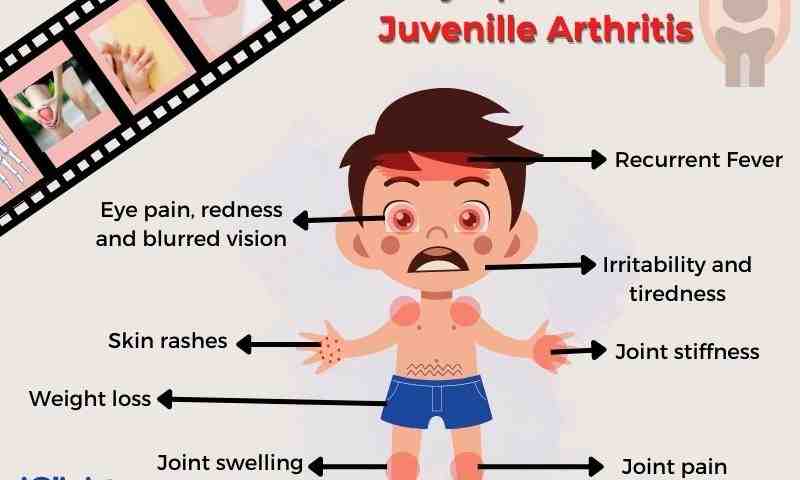How Common is Juvenile Arthritis?

What is Rhabdomyolysis After a Motor Vehicle Accident?
July 5, 2023
Love and Protect Yourself From The Sun!
July 5, 2023Juvenile Arthritis
According to the National Institutes of Health, July is designated as Juvenile Arthritis Awareness Month. Like adults, children and juveniles can get arthritis. Juvenile idiopathic arthritis (JIA), formerly known as juvenile rheumatoid arthritis (JRA), is the most common form of arthritis in children and adolescents. JIA refers to a group of inflammatory conditions that cause chronic or long-lasting joint inflammation in children and adolescents. It is an autoimmune disorder in which the immune system becomes overactive and mistakenly attacks healthy tissues in the body including the joints. The exact cause of juvenile arthritis is unknown or idiopathic, but it is believed to involve a combination of genetic, environmental, and immune system factors.
JIA is characterized by persistent joint stiffness, pain, warmth, and swelling that lasts for at least 6 weeks in children aged 16 or younger. The condition can affect one or more joints and may involve other organs in addition to joints. It typically begins before the age of 16 and can continue into adulthood, although the disease course varies for each patient. There are several subtypes of JIA which are classified based on the number of joints affected, the presence of other certain symptoms, and specific laboratory findings. The subtypes include:
-Oligoarticular JIA: This is the most common and mildest subtype which affects fewer than 4 joints during the first 6 months of the disease. It may involve larger joints such as the knees or smaller joints such as those in the hands or feet. Oligoarticular JIA can be further divided into persistent forms (symptoms continue over 6 months) or extended forms (symptoms involve 5 or more joints after 6 months of illness). Uveitis (chronic eye inflammation) can also develop with this subtype.
-Polyarticular JIA: This is the 2nd most common subtype which involves 5 or more joints during the first 6 months of the disease. It can affect both large and small joints, and it may be divided into two categories based on the presence of rheumatoid factor (RF) in the blood. The RF positive type tends to occur in pre-teen and teenage girls whose symptoms appear to be the same as adult rheumatoid arthritis.
-Systemic-onset JIA (sJIA): This subtype of JIA involves not only joint inflammation but also systemic symptoms such as fever, rash, and fatigue. In severe cases, inflammation can occur in or around internal organs such as the spleen, lymph nodes, liver, and linings of the heart or lungs. This subtype is also characterized by daily high spiking fevers and affects boys and girls equally. Children with sJIA may experience periods of disease flare-ups followed by periods of remission.
-Enthesitis-related arthritis: This subtype includes both arthritis and enthesitis. Enthesitis refers to when inflammation occurs at the site where tendons or ligaments attach to the bones. It commonly involves the spine, pelvis, and lower extremities. This subtype of JIA is more common in boys than girls.
-Psoriatic JIA: This subtype occurs in children with psoriasis (skin condition characterized by red, scaly patches) or a family history of psoriasis. It involves joint inflammation, skin lesions, nail changes, and eye inflammation. Psoriasis usually appears first followed by joint pain and stiffness; however, the opposite can also occur.
-Undifferentiated arthritis: This subtype includes children whose symptoms do not fit into the other types or if their symptoms fit into more than one type.
The treatment of JIA aims to reduce inflammation, relieve pain, prevent joint and organ damage, and maintain or improve the child’s physical function. It usually involves a combination of medication, physical therapy, occupational therapy, and lifestyle modifications. The treatment plan is tailored to the specific subtype and severity of the disease. It is vital for children with juvenile arthritis to receive ongoing medical care and support from a pediatric rheumatologist or a healthcare team specializing in pediatric rheumatology. With early diagnosis, appropriate treatment, and management, many children with juvenile arthritis can achieve remission or have minimal disease activity allowing them to lead active and fulfilling lives.
— This article is written by Deryk Harting, DC, one of the members of Chambers Medical Group’s team of car accident chiropractors who offer a variety of treatments and therapies ranging from diagnostic testing to various soft tissue therapies for car accidents and injuries in Florida.
–
Have you been in a car accident? If you or somebody you know has been in a car accident, be sure that you seek medical attention from a car accident doctor or car accident chiropractor to treat your injuries. Visit Chambers Medical Group to receive world-class medical treatment for your injuries.
Chambers Medical Group has car accident medical clinics in the following locations:
- Car Accident Medical Clinic in Tampa
- Car Accident Medical Clinic in Plant City
- Car Accident Medical Clinic in Brandon
- Car Accident Medical Clinic in Lakeland
- Car Accident Medical Clinic in Sarasota
- Car Accident Medical Clinic in Louisville
- Car Accident Medical Clinic in Lexington
- Car Accident Medical Clinic in Florence




